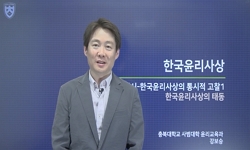원효가 소반을 던져 대중을 위기에서 구했다는 설화는 한국고대불교사에서 널리 알려져 있다. 북쪽의 평안도와 남쪽의 부산과 양산을 중심으로 한 경남의 사찰에서 지금까지 창건설화로 전...
http://chineseinput.net/에서 pinyin(병음)방식으로 중국어를 변환할 수 있습니다.
변환된 중국어를 복사하여 사용하시면 됩니다.
- 中文 을 입력하시려면 zhongwen을 입력하시고 space를누르시면됩니다.
- 北京 을 입력하시려면 beijing을 입력하시고 space를 누르시면 됩니다.

원효의 척반(擲盤)설화와 천성산 홍룡사의 불교사적 가치 = Folktales of the Chukban(擲盤) of Wonhyo and the Buddhist Value of Tiancheng Mountain Honglong Temple
한글로보기부가정보
국문 초록 (Abstract)
원효가 소반을 던져 대중을 위기에서 구했다는 설화는 한국고대불교사에서 널리 알려져 있다. 북쪽의 평안도와 남쪽의 부산과 양산을 중심으로 한 경남의 사찰에서 지금까지 창건설화로 전해지고 있다. 이 설화는 『송고승전』 이후 고려시대의 기록에는 보이지 않고 조선시대 불교사 기록에 수록되어 있다.
특히 조선후기 범해 각안의 기록은 원효가 대중을 구한 내용뿐만 아니라 원효가 천명의 수행자를 천성산으로 옮겼고, 마침내 원효가 불교학을 전한 성지가되었다고 하여 설화의 완성을 보여주고 있다. 설화는 원효가 천성산을 중심으로 한국고대불교의 사상과 신앙을 대중화시킨 진원지임을 표방하고 있다. 한편 홍룡사는 원효와 제자들이 사찰의 폭포에서 목욕했다는 창건설화를 가지고 있다. 더욱이 33관음 가운데 한 분인 랑견관음의 성지이기도 하다. 랑견관음은 폭포가 모든 것을 씻어내리 듯 중생의 번뇌를 씻어주는 역할을 함으로서중생의 생각을 맑게 한다. 또한 가뭄과 화재에는 비를 내려준다고 했는데, 일제강점기에는 기우제를 지냈다고 한다. 천성산과 홍룡사는 원효설화의 진원지이자 한국고대불교문화의 성지의 위상을 지니고 있다. 불교사상뿐만 아니라 불교문화컨텐츠의 원형을 제공하고 있는 귀중한 문화유산으로 보존해야할 것이다.
다국어 초록 (Multilingual Abstract)
The legend that Wonhyo threw a soban(小盤) to save the public from danger is widely known in the history of ancient Korean Buddhism. Temples in Gyeongnam, centered on Pyongan Province in the north and Busan and Yangsan in the south, have been said t...
The legend that Wonhyo threw a soban(小盤) to save the public from danger is widely known in the history of ancient Korean Buddhism. Temples in Gyeongnam, centered on Pyongan Province in the north and Busan and Yangsan in the south, have been said to be the creation and construction paintings until now. This folktale does not appear in the records of the Goryeo Dynasty after the 『song-gao- seng-chuan(宋高僧傳)』, but is included in the records of the history of Buddhism in the Joseon Dynasty. In particular, the records of Beomhae Gakan in the late Joseon period show the completion of the folktale by saying that Wonhyo moved a thousand ascetics to Cheonseongsan Mountain, and finally it became a sacred place where Wonhyo preached Buddhist studies. The folktale claims that Wonhyo was the epicenter of popularizing the ideas and beliefs of ancient Korean Buddhism centered on Cheonseongsan Mountain. On the other hand, the Honglong Temple(虹龍寺) has a story that Wonhyo and his disciples bathed in the waterfall of the temple. Moreover, it is also the holy place of Langyeongwan(浪見觀音), one of the 33 Avalokitesvara-Bodhisattva. Like a waterfall washing away everything, it washes away the defilements of sentient beings, thereby clearing the thoughts of sentient beings. It is also said that it brings rain in times of drought and fire, and it is said that it was held during the Japanese colonial period. Cheonseongmountain and Hongryong temple are the epicenter of Wonhyo folklore and the status of sacred places of ancient Korean Buddhist culture. It should be preserved as a valuable cultural heritage that provides not only Buddhist thought but also the prototype of Buddhist cultural contents.
동일학술지(권/호) 다른 논문
-
- 원광대학교 원불교사상연구원
- 조성훈
- 2024
- KCI등재
-
佛·道의 수행론 비교연구 -『六祖壇經』과 『莊子』을 중심으로-
- 원광대학교 원불교사상연구원
- 김종용
- 2024
- KCI등재
-
기후 위기 담론과 불교적 극복 방안 -인간 탐욕의 제거를 중심으로-
- 원광대학교 원불교사상연구원
- 임창옥
- 2024
- KCI등재
-
- 원광대학교 원불교사상연구원
- 전상현
- 2024
- KCI등재




 KCI
KCI DBpia
DBpia




